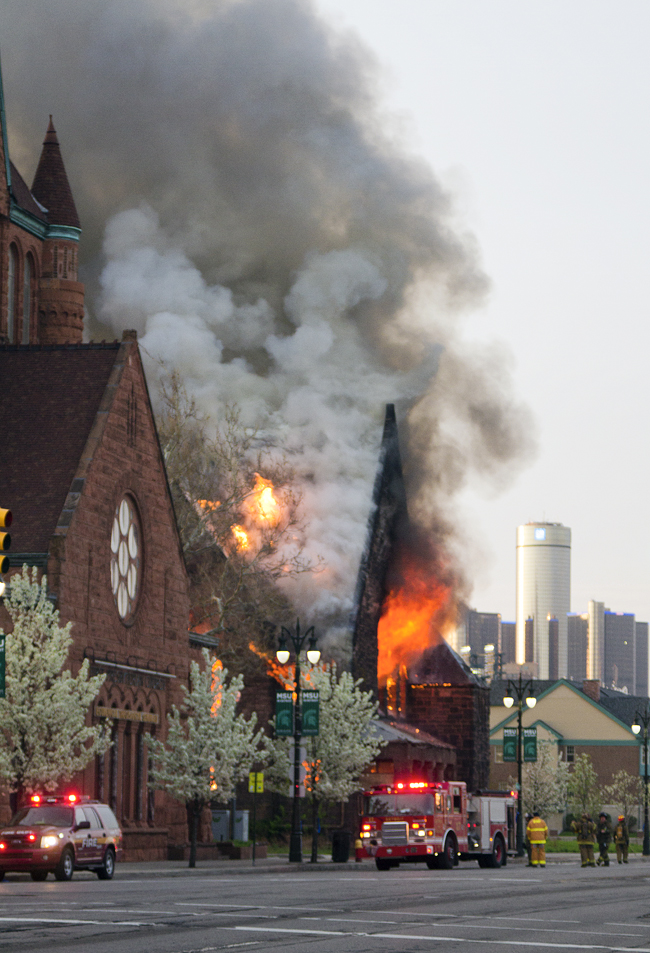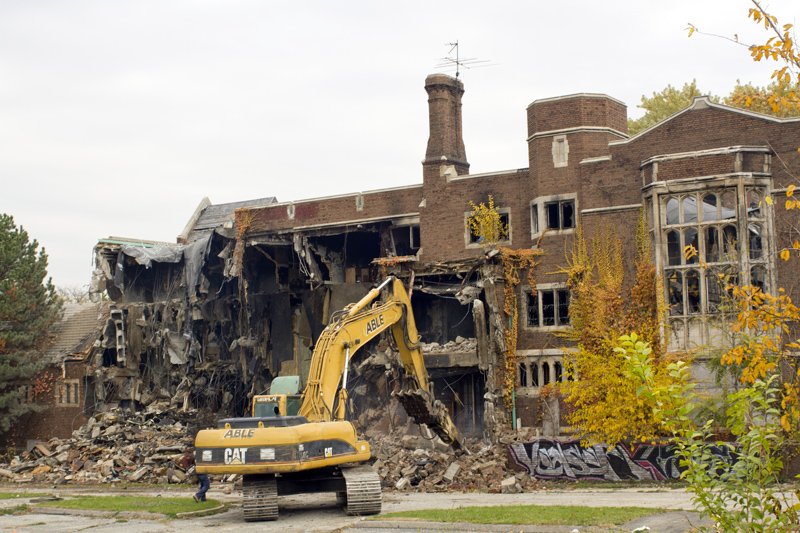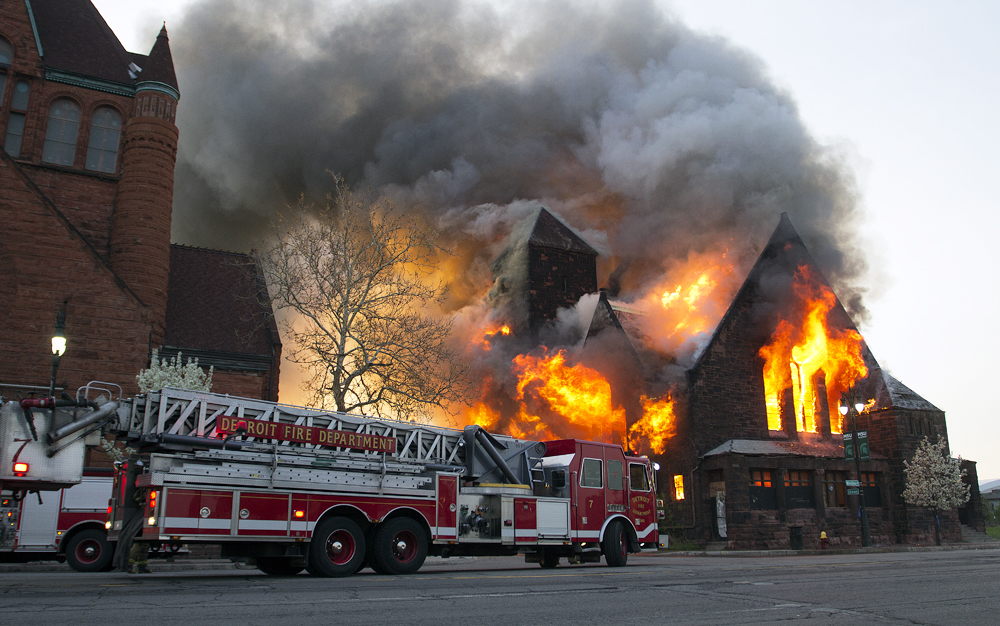Fire investigators have two big questions after a massive blaze tore though the historic, vacant First Unitarian Church on Woodward near downtown Detroit: How did it ignite and were homeless people trapped inside?
Those won’t be easy questions to answer because the 124-year-old Romanesque Revival building was gutted Saturday morning and demolished a few hours later. Neighbors said at least four homeless people were living in the church recently.
Arson investigators believe the fire was intentionally set because of how quickly the blaze spread. Less than two minutes after smoke was spotted on Woodward near Brush Park, flames were busting through every window of the red rock-faced church when the first fire engine arrived.
 Suspicion fell almost immediately on the church’s owner, Salim Kemenko, a property speculator who has owned the building – and property next to it – since August 2006.
Suspicion fell almost immediately on the church’s owner, Salim Kemenko, a property speculator who has owned the building – and property next to it – since August 2006.
“I have a DOJ person here that is aware that people who owned this building wanted to have it demoed but it’s protected, and he wants to talk to you,” a fire chief told dispatchers during the fire, asking for arson investigators to come to the scene.
Less than a year after Kemenko bought the property, it was already in the process of being reviewed for demolition, city records show. But there was a problem: The church was federally protected because it is on the National Register of Historic Places, which largely bars demolition unless a building is deemed unsafe.
The church is on prime real estate because it’s across the street from the future site of the Red Wings arena and adjoining entertainment district. Kemenko also owns property just south of the church. In late 2009, Kemenko demolished a gray squatty building on the property at 2844 Woodward.
Related: Check out a photo gallery of the ferocious fire
According to city officials and developers, Kemenko turned down potential offers from others to rehabilitate the church for years and open it back up as a commercial building.
We couldn’t reach Kemenko for comment.
Kemenko owns numerous properties in Detroit, many of which are abandoned lots. Under pressure from the nonprofit Detroit Crime Commission, Kemenko demolished a blighted building on Grand River.
This isn’t the first time one of Kemenko’s properties burned down. His house at Waterford Township burned down Dec. 27, 2008. Because of what he described as a dispute with the insurance company, Kemenko left the blighted, burned-out house standing for a year, leading to municipal violations.
The church fire investigation is being handled by Detroit’s under-resourced arson unit, which is only able to handle one of every five suspected fires. High-profile arsons are rarely solved in Detroit.

Take the historically protected University Club on East Jefferson, which was engulfed in flames when firefighters arrived. The damage was severe enough to allow for demolition. The property is now for sale.
Not far from the church, an intentionally set fire at the castle-like Luben Apartments in Brush Park was demolished in November 2010 almost immediately after a fire tore through it.
buy furosemide online https://nouvita.co.uk/wp-content/languages/new/uk/furosemide.html no prescription
No arrests have been made in either fire.
Steve Neavling
Steve Neavling lives and works in Detroit as an investigative journalist. His stories have uncovered corruption, led to arrests and reforms and prompted FBI investigations.


26 Responses to "Who would burn down historic church adjacent to Detroit’s new Red Wings arena?"